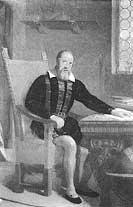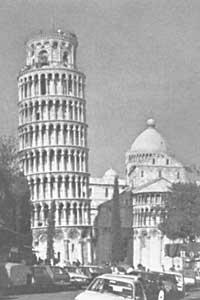Galileo Galilei, XVII. century sage
2001/01/01 Mendiburu, Joana - Elhuyar Zientziaren Komunikazioa Iturria: Elhuyar aldizkaria
With its own name and far back in time begins the path of this department. The Italian Galileo Galilei died on 8 January 1642, at the age of 78.
Galileo was born in Pisa in a family of seven brothers. He arrived at the University of Pisa at the age of seventeen, where he studied medicine, mathematics and physics. He studied at this university and looked at a cathedral lamp, specifically at the regular movement of the lamp. He returned home and began experimenting with lead balls and threads of different length. Regardless of the weight of the balls, he realized that the balls had to have the same time of displacement, which only changed the length of the thread. They say that this is how the pendulum story began.
Despite his great ability to learn from a young age, Galileo became a mischievous student. Among other things, during his stay at the University of Pisa he refused to wear academic clothes, claiming that he bothered him to properly perform his work. This denial was paid for, as it was expelled from the University of Pisa. However, in Florence he continued to study mathematics, began his private teaching and published his first works. In 1589, with the help of Guidobaldo del Monte, he obtained quite cost the chair of mathematics at the University of Pisa.
Creator of important theories
At the age of 25 he was appointed professor of mathematics at the University of Pisa. Through mathematics and experiences, he studied official school science from a critical point of view, based on the Aristotelian theory of that time.
In this, the influence of Archimedes, who had as a great teacher, was remarkable and important.
Galileo invented two important theories of physics. His early work focused on acceleration and created the concept of acceleration that is used in modern physics, which is increasing speed at a given time.
Galileo's second major contribution to physics was the new concept of friction and inertia of moving objects. In 1590 he began various experiences to define the components of force, demonstrating, for example, that the forces that cause the path of a bullet are directed down and forward. These experiences focused on the mechanical and movement sciences that were new at the time and their conclusions were published in the book Conversations in 1632.
Galileo's works constituted a basis for understanding the different spheres of motion and, among other things, Newton used them to deduce the laws of motion.
Although he spent a lot of time researching the movement, Galileo always showed great interest in astronomy. XVII. At the beginning of the 20th century, some Dutch heard that by joining a concave lens and a convex lens they could see the objects closer than there was. With this idea he made a telescope that multiplied by thirty objects and offered a public exhibition in 1609. Galileo's main discovery, however, was not the realization of a telescope, but the orientation toward the starry sky. Thus, he was the first person to see stars and satellites invisible until then.
Thanks to numerous and continuous observations, Galileo realized that the new stars disappeared as they appeared and deduced that the universe is not fixed, but variable. He then individually observed the Moon, Jupiter, Venus, Saturn and the Sun. In 1610 he discovered four satellites revolving around Jupiter and in the asterisk discovered that Venus and Mercury also revolved around the Sun. October 1610
He discovered sunspots and, following those spots, concluded that the Sun was back inside. On the other hand, he saw that the Milky Way was composed of thousands of small stars and was not, as previously thought, a "uniform vapor".
He published all his astronomical discoveries in the book Siderus Nuncis (Celestial Messenger) and, of course, created great importance among the scientists of the time.
As a result of his discoveries and revolutionary theories, Galileo Galilei had problems with the Inquisition. Although he managed to publish the book Conversations in 1932, his enemies made him believe that Pope Urban VII was represented by a character of the book and, in addition to prohibiting it, he was sentenced to the prison of Galileo. When he was about 70 years old, he was not taken prisoner, but was forbidden to discuss his ideas, attend meetings and attend visits. In time his punishment was diminishing and in recent years Viviani and Torricelli were his disciples. As usual, over time you have managed to exalt your work and check your discoveries. Today we do not doubt that its place in the history of scientists has been well earned.

Gai honi buruzko eduki gehiago
Elhuyarrek garatutako teknologia






